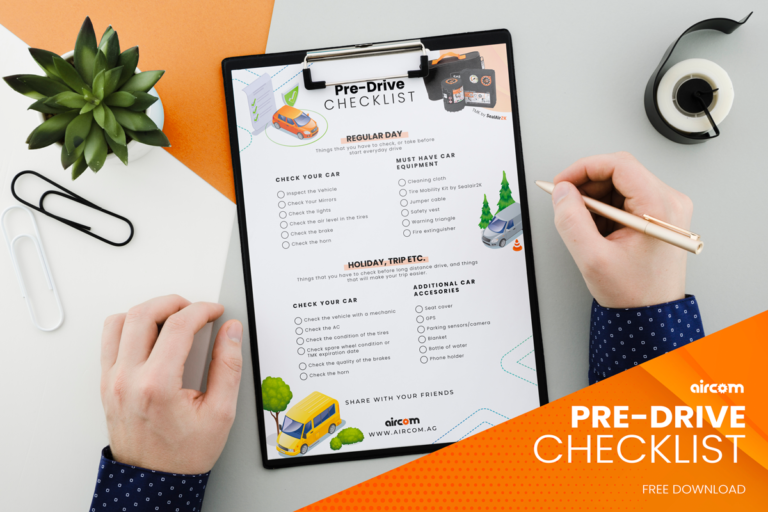The average lifespan of a car battery is a few years. Over time, its performance decreases, but that doesn’t necessarily mean you need to buy a new one. Sometimes, all it might need is a recharge using a charger. We’ll delve into this issue and discuss the mistakes to avoid.
Charging the car battery – it’s easier today
Truly freezing winters in Europe are now a thing of the past. While we do experience frosts, they usually don’t last too long. From the perspective of battery maintenance, this is good news. While owners of older cars might need to remove their batteries regularly, users of newer models should do so only as a last resort. Lack of extensive electronics is characteristic of cars that are a decade or more old. Modern, sophisticated systems don’t respond well to being regularly disconnected from their power source. Having to recode the radio each time is not the only issue we’ll have to deal with after disconnecting the terminals, but just one among many.
Charging the battery with a charger is the only task we’ll have to perform
Let’s start by saying that modern batteries hardly require any regular maintenance. Checking the electrolyte level, monitoring its density – these are all things we can forget about. We’re talking about tedious tasks, requiring patience and considerable attention to ensure a stray drop of electrolyte doesn’t burn a hole in our pants. Charging the battery is much easier today, rendering old guides on dosing electrolyte, for example, useless. Remember, even though a newly purchased battery won’t significantly differ from one bought 30 years ago, their identities will be superficial. Over the years, both the construction and composition of the lead plates in batteries have changed. This has led to improved capacity, durability, and mechanical strength. Hence, the simple conclusion that connecting the battery to a charger is possibly the only task associated with its maintenance that we might face. How to go about it? We’re about to explain!

Charging the battery – timing, start
If we use our car fairly regularly, its battery won’t require much attention. We might keep an eye on the terminals’ condition, but that’s about it. It’s a different story when our vehicle sits in the garage for months. Fortunately, in the newest batteries, self-discharge current is set low, and we don’t need to recharge them, for example, once a month. Unfortunately, after several months of inactivity, it might turn out that the battery plates have sulfated, and the device has lost its capacity. Using a trickle charger can solve this issue. It’s a small device that we plug into the garage power in autumn and unplug in spring. Thanks to its minimal power consumption, we don’t need to worry about a high electricity bill. Treated this way, the battery will maintain its maximum charge throughout. But what if our car is parked in a garage without electricity? A trickle charger is not an option, but we always have the option of charging the battery with a regular charger.
It’s best to do this in a garage or basement, certainly away from any potential sources of ignition. This is because during charging, the battery generates explosive hydrogen. For a full charge, it should take between 10 to 12 hours. If, for various reasons, we don’t have that much time and need the battery immediately, around fifteen minutes should suffice. That’s enough for the car to start smoothly, but upon returning home, it will be necessary to reconnect for a longer period, as mentioned earlier. When attaching the clamps, remember to connect the plus with the plus and the minus with the minus. Never the other way around! Then, set the appropriate value on the charger. Usually, it’s 12V, but let’s check if that number is indicated on the battery casing. Remember, the maximum charging voltage shouldn’t exceed 14.8V. Once everything is connected, simply plug the charger into the socket.
Charging the battery with a charger isn’t working – what then?
It may happen that despite our efforts, the battery remains dead. The most common cause then turns out to be an unfortunate but essentially common failure. Sudden, unannounced malfunctions are usually the domain of cheap batteries, which can fail even after a short period of use. Among the most common reasons for malfunction are cracks between the cells or a broken plate. For such a battery, there’s no revival, hence the necessity of purchasing a new one.

Charging the battery away from home
The charger works at home, but the battery can discharge anywhere. For this reason, it’s worthwhile to carry jumper cables in the trunk. There’s nothing complicated here either. Position the working car as close as possible, turn off the engine, and connect the terminals in both vehicles. Now start the engine in the running vehicle. After a few minutes, try starting your own car. If it works, you can disconnect the cables.





